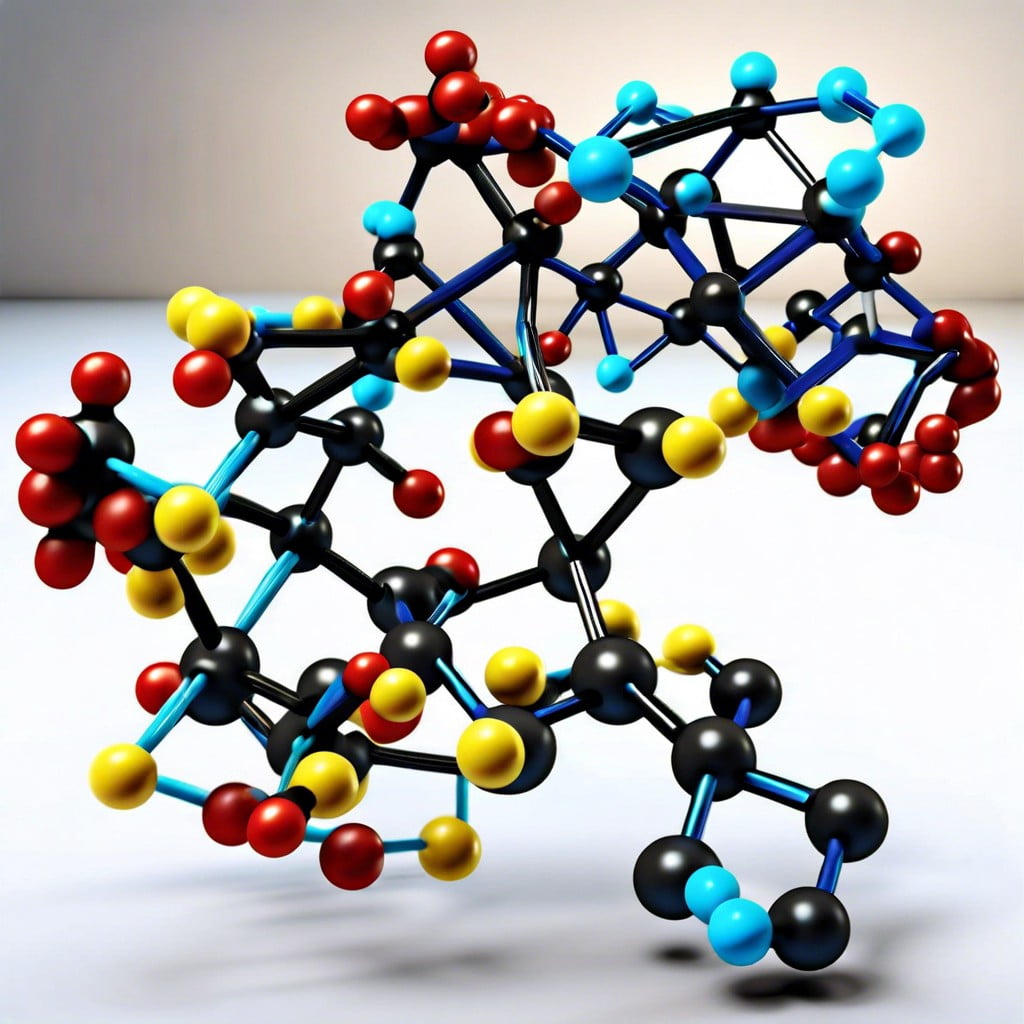Discover why RNA is considered a polymer and the role it plays in biological systems.
Key takeaways:
- RNA is a polymer composed of nucleotides.
- RNA’s structure allows it to adopt complex shapes critical for its function.
- Nucleotides are the building blocks of RNA, consisting of a sugar, phosphate, and nitrogenous base.
- RNA and DNA have significant structural and functional differences.
- RNA plays a crucial role in protein synthesis and gene regulation.
Definition of a Polymer

Polymers are large molecules composed of repeating structural units, often connected by covalent chemical bonds. Think of a polymer as a train where each car is a molecule linked to the next, forming a long, sometimes complex chain. These subunits, known as monomers, are the building blocks that come together through a process called polymerization.
Polymers can be natural, like cellulose in plants or synthetic, like polystyrene plastic. Their physical properties vary greatly—some polymers are rubbery, others are tough and rigid—reflecting their diverse array of structures and compositions. The wide range of characteristics is what allows polymers to be incredibly versatile, finding applications in everything from clothing and construction to electronics and medicine.
RNA As a Polymer
RNA, composed of long chains of monomers called nucleotides, is indeed a polymer. Each nucleotide consists of a sugar molecule, a phosphate group, and one of four nitrogenous bases – adenine, guanine, cytosine, or uracil.
These nucleotides connect through covalent bonds between the sugar of one and the phosphate of the next, forming a sugar-phosphate backbone with the nitrogenous bases as side groups. It’s this specific arrangement and sequence of bases that encode genetic information.
The polymer nature of RNA allows it to adopt complex three-dimensional shapes critical for its function in the cell, including acting as a template for protein synthesis and regulating gene expression.
Moreover, the versatility of RNA’s structure enables it to catalyze chemical reactions, much like enzymes, which is a unique characteristic for a nucleic acid polymer.
Components of RNA: Nucleotides
Ribonucleic acid (RNA) is built from building blocks known as nucleotides. Each nucleotide comprises three key components:
- Sugar Molecule: Specifically, ribose, which distinguishes RNA from DNA, which contains deoxyribose.
- Phosphate Group: This is what links together the nucleotides to form the backbone of the RNA strand through strong covalent bonds.
- Nitrogenous Base: Four types are found in RNA – adenine (A), cytosine (C), guanine (G), and uracil (U), with uracil replacing thymine found in DNA.
The sequence of these nitrogenous bases encodes genetic information and determines the unique structure and function of each RNA molecule. Through the process of polymerization, nucleotides are connected in a specific order to form the single-stranded structure of RNA, enabling it to perform its various roles within the cell.
RNA Vs. DNA: Key Differences
While both RNA and DNA are nucleic acids essential for genetic function, they differ significantly in structure and role:
1. Sugar Component: RNA contains ribose sugar, whereas DNA has deoxyribose, which lacks one oxygen molecule.
2. Strand Formation: RNA is typically single-stranded, allowing it to fold into complex 3D shapes. In contrast, DNA usually exists as a double-stranded helix.
3. Nitrogenous Bases: RNA uses uracil (U) in place of thymine (T), which pairs with adenine in DNA.
Additionally:
- Function: RNA acts as a messenger and builder, translating genetic code for protein synthesis. DNA, on the other hand, serves as a long-term blueprint for genetic information.
- Stability: DNA is more stable than RNA and is less susceptible to enzyme degradation.
- Location: Within cells, DNA is found primarily in the nucleus, while RNA operates both in the nucleus and cytoplasm.
Functions of RNA: Protein Synthesis and Genetic Regulation
RNA plays a crucial role in the body by guiding protein synthesis – a process vital for life. In protein synthesis, messenger RNA (mRNA) carries information from DNA to the ribosomes, where proteins are constructed. Transfer RNA (tRNA) then brings amino acids to the ribosomes, ensuring they are added in the correct sequence to form proteins.
Moreover, RNA is involved in gene regulation. Certain types of RNA, such as microRNA (miRNA) and small interfering RNA (siRNA), can bind to specific mRNA molecules, blocking their translation into proteins or targeting them for degradation. This allows cells to control which proteins are produced and in what amounts, enabling them to respond quickly to changes in the environment or developmental cues. Through these functions, RNA helps to regulate gene expression and ensures that the correct proteins are made at the right time for proper cellular function.
Recap




